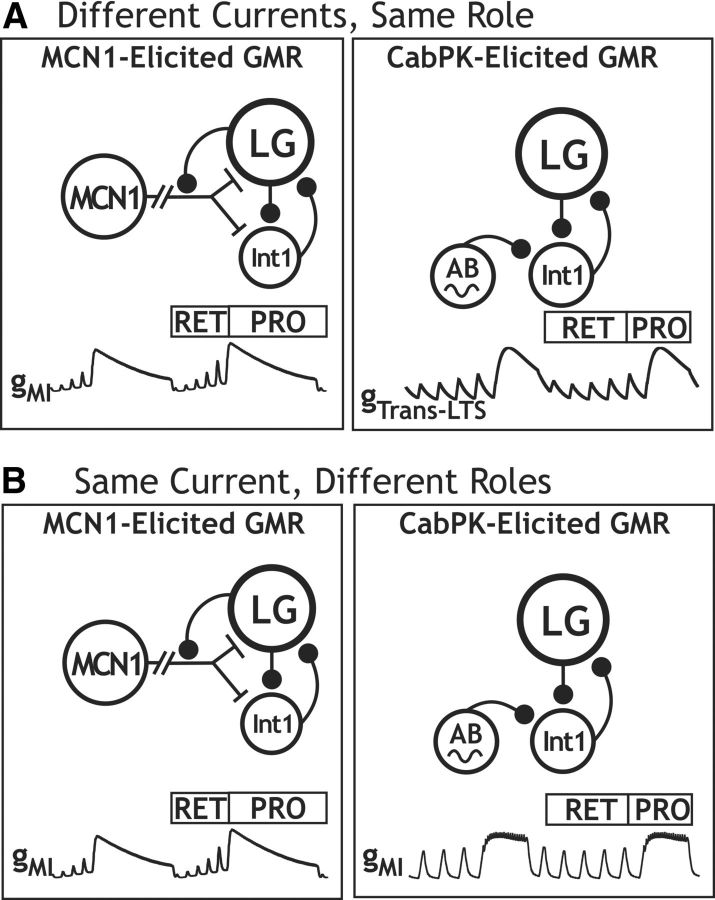Figure 14.
MCN1 stimulation and CabPK superfusion activate different conductances to perform the same function, and activate the same conductance to perform different functions, during gastric mill rhythm generation. A, Rhythmic LG neuron burst generation results from the rhythmic buildup and decay of MCN1-activated gMI (left) and CabPK-activated gTrans-LTS (right). During MCN1 stimulation, the buildup occurs during retraction and results from continual MCN1 activation of gMI, while the decay during protraction results from LG neuron presynaptic inhibition of MCN1 transmitter release. During CabPK application, the buildup during retraction results from the accumulation of deinactivation in gTrans-LTS, while the decay during protraction results from the time-dependent inactivation of this conductance. B, The gMI in LG is the burst-generating conductance during the MCN1–gastric mill rhythm, whereas it provides a sustained but subthreshold depolarizing drive that facilitates PIR burst generation by ITrans-LTS during the CabPK–gastric mill rhythm. Note that the different gMI trajectories during protraction result from gMI being both voltage- and synaptic inhibition-dependent during the MCN1–gastric mill rhythm, whereas during the CabPK–gastric mill rhythm it is only voltage-dependent. RET, Retraction; PRO, protraction.

